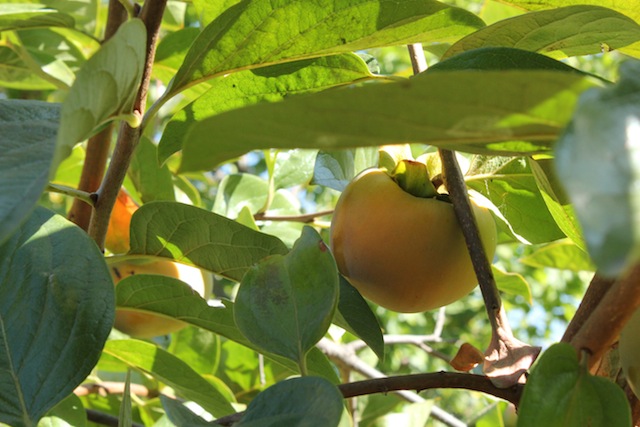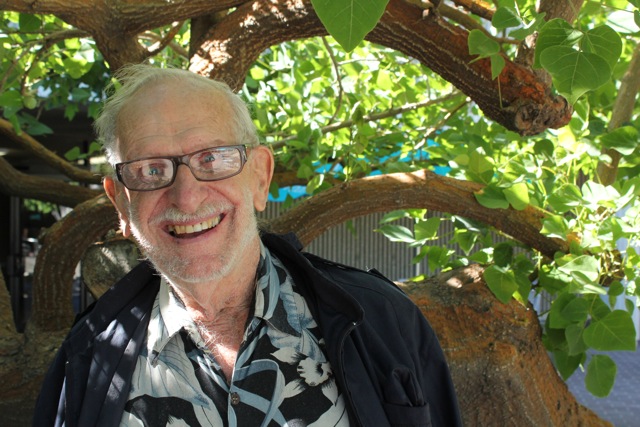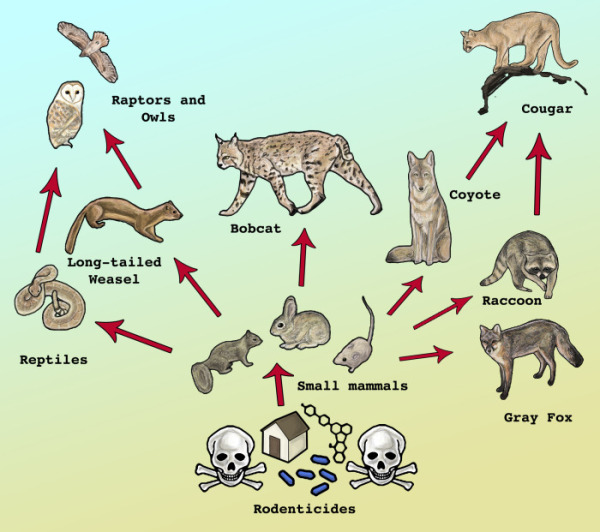The Dry Garden: A shear education
Posted on | November 11, 2011 | No Comments

One of the first things that I wanted to do in my new garden last year was to cut down the persimmon tree at the center of the large backyard. As early rains stripped the last of the leaves from its limbs and crows pecked at a few fruit, it looked less like a tree and more like an accident scene. Had the person who pruned its tangle of stumped and crossed limbs been a maniac? A gaping crack where the main branches met the trunk looked like it had been smote from heaven.
Only catching sight of its last fall leaves at twilight stopped me. A year later, restoring that wounded tree has become one of my passions. After scant fruit last year, this fall the tree — perhaps 10 feet tall and 12 feet wide — has produced so much fruit that I’ve called in friends and told them to bring crates. Tending it has amounted to an education.
Click here to keep reading about how to work with persimmon wood for a tree that lends glory and crazy amounts of fruit to autumn in the California garden.
“Isn’t it true …”
Posted on | November 10, 2011 | 3 Comments
It was a long day yesterday and watching a lawyer for Las Vegas question a water analyst from a California wasn’t supposed to be part of it, until it was. Seldom are courtroom proceedings in real life better than they are on, say, “The Good Wife.” But for the first half of Wednesday, November 9th, 2011, in the on-going Carson City hearings over whether or not to grant a Las Vegas pipeline water from four rural Nevada valleys, reality won.
Appearing for Las Vegas was Steven Sims, a New Mexico-based lawyer better known in California as counsel for the Westlands Water District, the Central Valley corporate farm interest dedicated to overturning the Endangered Species Act the better to siphon massive amounts of water from the Sacramento-San Joaquin Bay Delta without regard to water needs of fish.
Appearing as an expert witness for opponents of the pipeline was Peter Gleick, president of the Oakland-based Pacific Institute and a water policy analyst famous for having received a “genius award” from the John D. and Catherine T. MacArthur Foundation. The Pacific Institute studies water use throughout the West with a particular eye on finding ways to conserve water and energy.
At issue was a 2007 Pacific Institute study concluding that tens of thousands of acre feet of water could be saved if Las Vegas did more on conservation. Click here to keep reading
Tags: chance of rain > Emily Green > Peter Gleick > Southern Nevada Water Authority > Steven Sims
The man who loved trees
Posted on | November 7, 2011 | 5 Comments

Scott Wilson in the courtyard of the Los Angeles County Department of Public Works headquarters, where he had gone in June 2011 to protest the felling of an Arcadia oak grove by the county Flood Control District. Photo: Emily Green
Scott Wilson, founder of North East Trees, died this morning after collapsing in his Eagle Rock garden over the weekend. He was 89.
The man whose urban greening career started with a massive oak planting at Occidental College in 1989 went on to build a non-profit that combined urban forestry with storm water management, river restoration and town planning. In the last 22 years, his team of landscape architects and horticulturists have been responsible for 35 public gardens and the planting of some 50,000 trees. As he fought to revive the Los Angeles River, former staffer landscape architect Jessica Hall remembers his clarion call being “We’ve just got to outlive the opposition!”
According to a statement issued by North East Trees, Wilson was pruning a tree to take clippings to his church when he lost consciousness and fell. “I believe this was how Scott might have chosen his final act to be: in service to his community – and in a tree,” wrote executive director Mark Kenyon.
There is no word yet on what kind of tree it was. “We’ve been asking each other that all day,” said North East Trees landscape architect Kathleen McKernin.
The Dry Garden: Empathy for the underground
Posted on | November 4, 2011 | 1 Comment

To learn more about why poisoning gophers is to kill indiscriminately, click on this graphic by UCLA Environmental Studies student Christine Danner to be taken to the site Urban Carnivores.
Plant ecologist Paula Schiffman came to praise gophers when she packed a lecture last spring hosted by the Los Angeles chapter of the California Native Plant Society. It was awkward for the Cal State Northridge professor, given that most of the audience filling a cold, no-frills Santa Monica meeting room had come to learn how to kill the animals.
The atmosphere only got colder as Schiffman’s live-and-let-live message began to sink in: Gophers were here before us, they are integral to our local ecology, and one of the most common ways that we kill them also can accidentally poison a whole host of other animals.
Click here to keep reading The Dry Garden’s “Detente with the gopher” in the Los Angeles Times.
High good, low bad: Mead in October 2011
Posted on | November 1, 2011 | 2 Comments

While we set out to scare each other last night, Lake Mead was all about reassurance. The largest storage reservoir on the Colorado River continued to rise as a result of last winter’s generous snowpack. Allowing for some tweaking by federal river keepers, Mead closed at midnight on Halloween 2011 at 1,120.00 feet.
This is almost 37 feet higher than the previous October closing.
Hooray? Click here to keep reading
« go back — keep looking »

